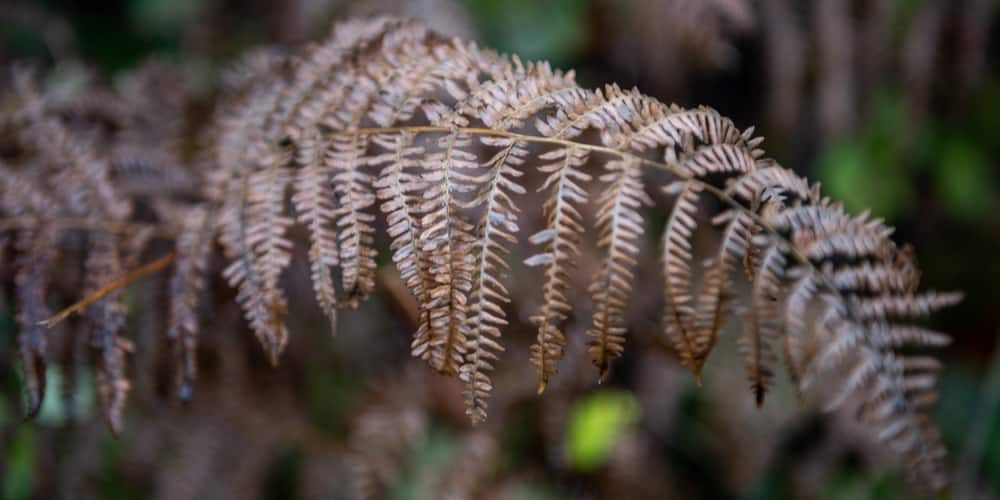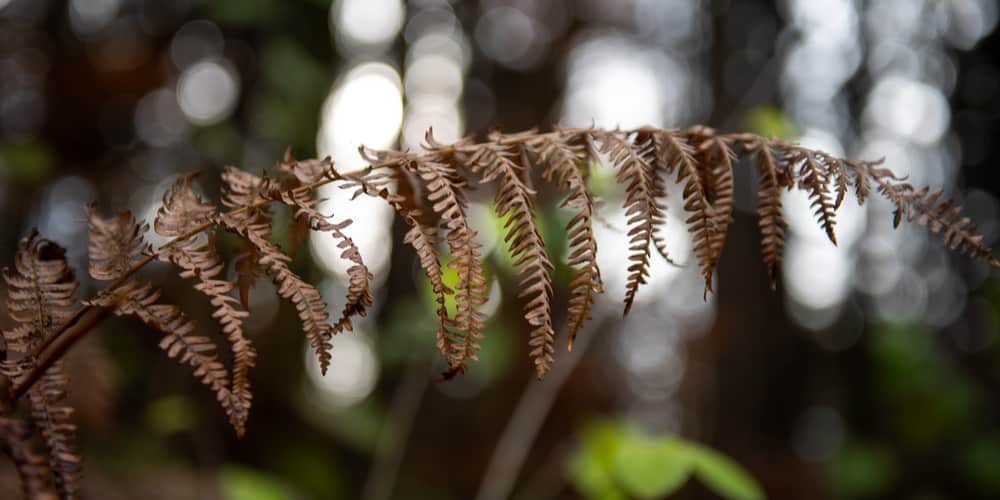They come with graceful, green fronds that add a touch of elegance to any space. But ferns can be finicky plants, and sometimes it’s hard to tell if they’re healthy or not.
If you think your fern might be dead, there are a few things you can look for to be sure. Additionally, there are a few steps you can take to try to revive your plant.
How to tell if a fern plant is dead
Trying to determine if a plant is truly dead can be tricky. You ought to be vigilant during the inspection to catch any subtle signs of life. So, what are the steps that you should take?
1. Check the frond of your plant in spring
It’s best to examine the state of your fern in spring because that is when your plants are actively growing. You can expect some die-back in winter even for the hardiest of ferns.
So, if all the fronds on your plant have died back and there are no new ones emerging, it’s a bad sign. Conversely, even a single new frond is a good sign that your plant is still alive.
2. Examine the rhizome
The rhizome is the thick, fleshy root system of your fern. It’s usually located just under the soil surface. When checking for growth, it’s vital to be as gentle as possible. That way, you can avoid disturbing the rhizome or damaging any new growth that might be occurring.
If there is new growth emerging from the rhizome, it’s a good sign that your plant is still alive. However, if the rhizome itself is mushy or has started to decay, it’s likely that your plant is dead.
3. Check for new growth in the crown
The crown is the center of your fern plant where all the fronds originate. If the plant is still alive, you should see some new growth in the form of tiny fiddleheads emerging from the crown.
If the crown is brown, it’s a potential sign that your plant is dead. However, it’s also possible for the plant to be dormant. So, it’s best to wait a few weeks before making a final determination.
Steps you can take to revive a dying fern
If you’re sure that your fern is indeed dead, then you probably just have to accept that it’s time to let go. However, if the plant is not yet dead, there are a few steps you can take to try to revive it.
1. Check the soil
One of the most common reasons for a fern to die is that the soil is too dry. If the soil is dry, try watering it thoroughly and see if that makes a difference. Keep in mind, however, that the soil needs to be moist, not soggy.
If the soil is waterlogged, on the other hand, it could be causing the roots to rot. In that case, you’ll need to repot the plant in fresh, well-draining soil.
2. Check the environment
Ferns need a humid environment to thrive. If the air in your home is too dry, it could be causing the plant to stress and eventually die.
To increase the humidity around your fern, you can mist it regularly or set it on a pebble tray. You can also try moving it to a room with a humidifier.
Even rooms that are naturally more humid, like the bathroom, can be a better environment for your fern.
3. Improve the drainage of the growing container
Ferns also prefer a well-drained growing container. If the pot you’re using doesn’t have drainage holes, it could be causing the plant to rot.
To improve the drainage, you can re-pot the fern in a pot with drainage holes or add some perlite or gravel to the bottom of the current pot.
4. Prune the plant
If your fern is looking leggy or sparse, it might benefit from a good pruning. Pruning will encourage the plant to produce new growth, which can help it to look fuller and healthier.
To prune your fern, simply cut back the fronds to the desired length. You can also remove any dead or dying leaves.
5. Fertilize the plant
Ferns typically don’t need to be fertilized, especially if they’ve been grown in soil that is nourished using compost. However, if the plant is looking unhealthy, you can try fertilizing it using a well-balanced 10-10-10 fertilizer.
The fertilizer should be a slow-release type so that you don’t have to worry about over-fertilizing the plant.
Is My Fern Dead: Final word
The surefire way to tell if your fern plant is dead is to exercise patience and check for new growth in the spring. If there is new growth, the plant is still alive. Ferns are wonderful evergreen plants, with a little care and attention, you can bring yours back from the dead.
Conversely, if there is no new growth and the plant looks brown and withered, it’s likely that it’s dead. If you’re not sure, you can wait a few weeks to see if the plant starts to show any signs of new growth.

